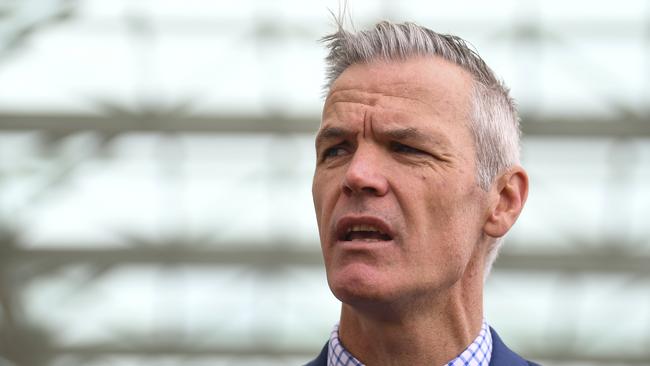Farmers support ag emissions to be targeted under new Labor plan
Farm leaders have welcomed a new national plan for agricultural emissions as Labor targets sharp reductions to meet its carbon targets.
Farm leaders have supported a new federal government policy to create “net zero sectoral plans” for six individual parts of the economy, including agriculture, as it looks to sharply reduce emissions and the nation’s carbon footprint.
The ‘decarbonisation plans’, announced today by Energy and Climate Change Minister Chris Bowen, are designed to replace the nation’s existing 2050 net zero strategy that the government labelled “a fantasy” and no longer fit for purpose.
In a speech to announce the major policy change, Mr Bowen said the Morrison government’s carbon blueprint was unrealistic as “it assumes future technologies will do the heavy lifting without any effort or investment to bring them about.”
“I’ve also listened to, and been struck by, advice from Australian and international investors that government-guided sectoral plans are vital for attracting billions in new investment in decarbonisation in Australia,” he said.

The six industry-specific “net zero sectoral plans” will be developed for key emitters in electricity and energy, industry, the built environment, agriculture and land, transport and resources.
Farmers for Climate Action strategy director Kitty Walker said individual emission reduction plans for agriculture and other sectors were a “common sense” approach.
“Farmers are already leading the way on emissions reduction and Farmers for Climate Action’s report into this showed agriculture could comfortably reach net zero by 2040 while increasing production,” she said.
Labor’s climate bill was one of the first pieces of legislation for the Albanese government and made into law its reduction targets of 43 per cent below 2005 levels by 2030 and net zero by 2050.
It is yet to set its 2035 markers, however today’s announcement signals that the government’s focus is shifting towards other highly emitting sectors after bedding down a ‘safeguard mechanism’ targeting the nation’s 215 biggest polluters.
Federal Agriculture Minister Murray Watt will help Mr Bowen identify how emissions can be reduced across agriculture in developing the sector pathway by late 2024.
Mr Bowen said the strategy was to be a “shared endeavour”, building on new and existing plans, between industry, the climate movement, experts, unions and the community.”
National Farmers’ Federation chief executive Tony Mahar hoped Labor’s plan would commit the resourcing necessary to help finance currently developing low emissions technologies for agriculture into commercial enterprises.

“A sectoral plan looking at agriculture’s role in the net zero transition is a good thing,” he said.
“‘Net zero’ doesn’t mean zero farm emissions by 2050. It’s important the sectoral plan is developed in partnership with the sector, and recognises the challenges and trade-offs in bringing down farm emissions in a responsible way.
“Farmland is the unspoken ‘net’ in ‘net zero’, so we’d hope every sectoral plan looks closely at the impact of offsets on food and fibre production.”
Meanwhile, Australian agriculture’s post-drought recovery has come at a cost, with the sector’s greenhouse gas emissions rising to their highest levels in almost two decades.
Recent Greenhouse Gas Inventory data shows that, overall, agriculture accounted for 17.4 per cent of Australia’s total emissions inventory, up 2.6 per cent, in the 12 months to December 2022.
Electricity was the largest contributor at 33 per cent, followed by stationary energy at 22 per cent, transport at 20 per cent, agriculture, fugitive emissions, on 10 per cent, industry at 7 per cent and the waste industry at 2 per cent.




